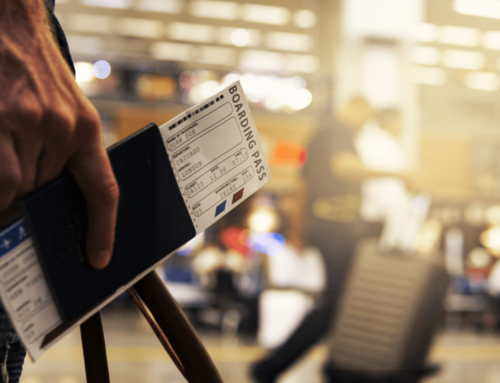“A deaf person walks into a bar.” It may sound like the start of a classic joke formula, but this what actually happens all over the world daily, along with: “A deaf customer walks into your retail store,” or “a deaf taxpayer walks into your tax prep office,” or “a deaf driver walks into your auto body shop.”
Whether you’ve taken a sign language class or two in high school, or more recently, seen Christine Sun Kim signing the national anthem alongside Demi Lovato and Yolanda Anderson at the Super Bowl LIV, you may already have some level of Deaf Culture understanding.
But at the unpredictable moment when a deaf person walks into your place of business, are you ready to engage?
As the saying goes: “This is not a drill.”
With 48 million Americans experiencing some degree of hearing loss, this is not a lottery-winning rarity. On any random business day, your chances of serving a deaf client are one in five! Let that sink in for a moment.
As highlighted in Five Customer Service Fails, there’s a lot of ways to flub this. But there are so many ways to score high as well.
First things first: Observe
Sometimes it is immediately obvious you are engaging with a deaf person. Perhaps they signed to you, or their deaf companion. Or you may have caught a telltale side-view flash of a hearing aid earmold or cochlear implant.
Other times, it may take a while to register the “signs”. Perhaps an elderly gentleman has asked you to repeat yourself several times. Or a young woman is engaging with you just fine, but is immediately lost once you turn your back to look something up on the computer.
Ask what works for them
By now, you’ve made shrewd observations in a matter of minutes. Well done, Sherlock! Your next step is to deduce how the rest of this conversation will go.
You can set the expectation like this: “I noticed that you (insert communication type). Would it help if I (insert communication workaround)?”
Example: “I noticed that you wear hearing aids. Would you like to walk side-by-side while I direct you to the item you’re looking for?”
Written legibly: “I noticed that you sign. Would you like for us to converse using this notepad and pen?”
Understand your fears, then catapult out the comfort zone
Work stress can add to the uncertainties you may feel about investing a little extra time on a deaf person.
Perhaps you’re juggling multiple patients during a clinic’s peak season, or your boss or co-workers are hollering for assistance on the intercom, or it’s near closing time at a big-box retailer and you’ve got a backlog of paperwork to dash off before dinner.
Take a deep breath. Remember: Most deaf customers will work with you, not against you. They’re the experts at communication, so let them guide you.
It takes two to tango. And before you know it, you’ll have made a sale and even better: secured a loyal repeat client for years to come.
Think visually, act flexibly
How you engage with a deaf or hard of hearing person will depend on your type of business. In virtually all scenarios, it requires flexibility. That may mean switching up how you normally conduct business.
If you’re at a fast-paced retail storefront, your inclination is to power-walk the customer towards an item they’re looking for, or give elaborate verbal directions. Do this instead: Offer to walk side-by-side, or use sign language or a gesture to show the isle number.
If you’re a medical setting at the front desk, you may be used to staring at your computer screen to wade through HIPAA paperwork or scheduling software. Do this instead: Take time to peel away from the screen and make eye contact.
Remember: You’ve got this! With a little bit of patience, you’re on your way to expert-level customer service.





